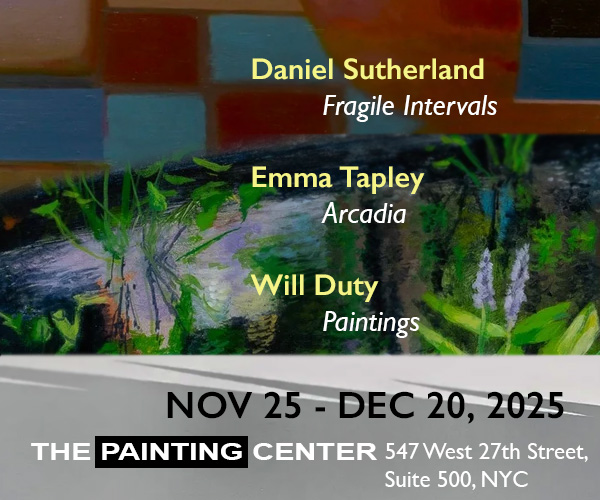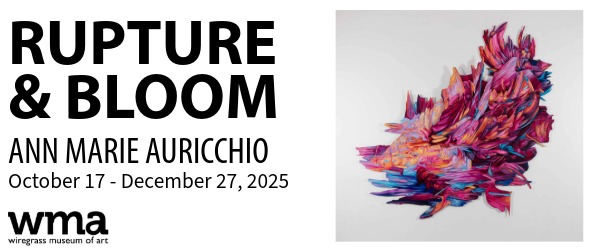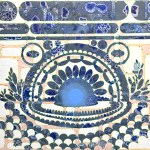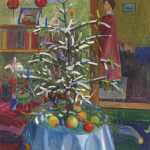
I was lucky to have�a chance to stop by�the compelling�Cy Twombly retrospective�at Centre Pompidou in Paris earlier this month. Spanning Twombly’s�entire career, the exhibition comprises�three major series: “Nine Discourses on Commodus”�(1963), “Fifty Days at Iliam”�(1978), and “Coronation of Sesostris”�(2000). I’ve always been drawn to Twombly’s drawing, sensual surfaces, and mastery of�warm�and�cool whites,�but�this show�focusesd on another aspect of his work:�the important role�literature played in�his process. Many of the�abstract, text-based�paintings began with�ancient literary narratives, which he read voraciously and interpreted through�agitated text-like�scribbles�and scratchy hand drawn�lines.


In his review in The Guardian, Jonathan Jones wrote that Twombly’s art is about sex, death, and longing:
History and myth enabled him to speak of these private things on a grand scale, to project his emotions across the most grandiose of canvases….[F]rom his early works onwards Twombly too sought the very essence of human culture as he explored parallels between the marks painters make and the rudiments of written language. He is the Levi-Strauss of graffiti art, revealing profound and mysterious connections between the impulse to scrawl and the instinct to paint.
So it is fitting that France is staging the first�Cy Twombly�retrospective since his death. On the top floor of the Centre Pompidou, the helmeted Greek heroes have returned. Gore, love and revenge stain the walls. At the heart of this sensitive compilation of Twombly�s paintings, not to mention his sculptures and Polaroid photographs, are paintings that sink themselves into the frenzy and rage of Homer�s Iliad. This founding masterpiece of ancient Greek literature purportedly tells the story of the Trojan war but in reality concentrates on a single tragic episode when the massive sulk of the Greek warrior Achilles drives his companion Patroclus to put on Achilles� armour and get himself killed. Achilles takes epic revenge, slaughtering the Trojan Hector….
For Twombly, the story of Achilles and Patroclus is a sex tragedy. … Twombly makes their love a passion that blazes through eternity. In another 1962 work, Achilles Mourning the Death of Patroclus, two gory flowers of pain are connected by a slender umbilical cord of blood. Achilles cannot let go of Paroclus: their bond is mightier than death. The ghostly rose that was Patroclus is tied forever to the pulsing heart that is Achilles.






According to his NYTimes obituary, Twombly only made one written statement about his work:
In a short essay in an Italian art journal in 1957, he tried to make clear that his intentions were not subversive but elementally human. Each line he made, he said, was �the actual experience� of making the line, adding: �It does not illustrate. It is the sensation of its own realization.� Years later, he described this more plainly. �It�s more like I�m having an experience than making a picture,� he said. The process stood in stark contrast to the detached, effete image that often clung to Mr. Twombly. After completing a work, in a kind of ecstatic state, it was as if the painting existed but he himself barely did anymore: �I usually have to go to bed for a couple of days,� he said.
As�Obama’s age of reason and hope gives way to what is, at least by design, an authoritarian regime, I wonder if urgent emotional content and lived experience will return as subject matter for angry, overwrought�artists. Perhaps�meta-narratives, theory, and esoteric research are mainly just indulgences for less divisive times.
“Cy Twombly,” curated by Mnam/Cci, Jonas Storsve. Centre Pompidou, Paris, France. Through April 24, 2016.
Related posts:























Hi Sharon, ALL art is about sex, death and longing, not just Twombly’s. That’s nothing new and even encompasses genres such as minimalism and photorealism.
Sex, death and longing are MAJOR parts of the human condition.
I’m surprised that you weren’t aware of his sculpture, I’m not a fan but he like most artists delve into other forms of making stuff.
i think no one laughed harder on the way to the bank than mr twombly … “squiggles!”, he could be heard to chortle, “all this money for squiggles!”